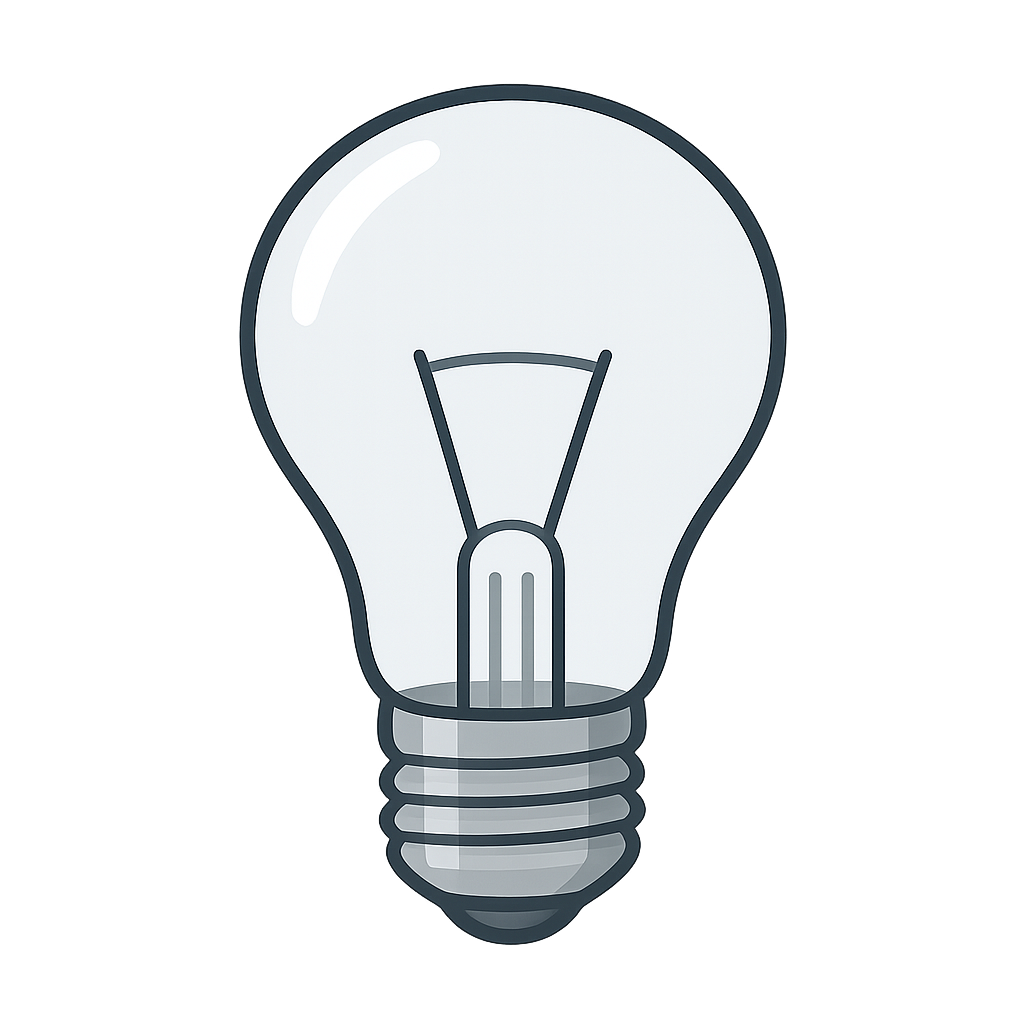The Story of the Light Bulb
Hello there. My name is Thomas Edison, and I am an inventor. Before I tell you my story, I want you to imagine a world where the night was truly, deeply dark. A time when homes were lit by the flickering, dancing flames of candles that dripped hot wax everywhere, or by smelly, smoky gas lamps that hissed in the corners of rooms. The light was often dim, unreliable, and you couldn't read a book or play a game for very long after the sun went down. It was a world of shadows. But I had a dream, a colossal, magnificent dream! I wanted to find a way to make light that was safe, bright, and affordable for everyone. My big idea was to tame electricity, to make it work for us. I imagined creating a kind of magic lamp, one that you could turn on with a simple switch. I wanted to capture a little piece of the sun and put it inside a glass bottle for every home to use. This is the story of how that dream, the dream of the electric light bulb, came to life.
My laboratory in Menlo Park, New Jersey, was my favorite place on Earth. It was an invention factory, a place buzzing with energy and wild ideas. My team and I knew we needed to send electricity through something to make it glow. The real puzzle, the enormous challenge, was finding the perfect material for a tiny glowing thread, which we called a “filament.” This filament had to get incredibly hot and shine brightly, but without burning up in a flash. Can you imagine how tricky that was? We tried everything. And I mean everything! We tested over six thousand different materials. We tried platinum and other fancy metals. We tested fibers from plants like bamboo and coconut. I even tried a hair from my friend’s beard. Nothing seemed to work for very long. They would either burn out instantly or glow for only a few minutes before poof, they were gone. People started to whisper that it was impossible. Some reporters wrote that I was wasting my time. They would say, “Mr. Edison, you’ve failed again!” But I would just smile and reply, “Nonsense. I haven’t failed. I’ve just found another way that won’t work.” Every single attempt taught us something new and brought us one step closer. Then, one exciting evening in October of 1879, we tried something new. We took a simple piece of cotton sewing thread, bent it into a little loop, and baked it in an oven until it turned into pure, black carbon. Very carefully, we placed this fragile thread inside a glass bulb and pumped all the air out. We held our breath and flipped the switch. It glowed. It didn’t flicker or sputter. It shone with a steady, warm, and beautiful light. We watched and waited, and it just kept glowing. It glowed for one hour, then five, then ten. It shone for over thirteen hours straight. We had finally done it. We cheered and danced around the lab. We had found our glowing thread.
Finding the perfect filament was a huge victory, but my work wasn't finished. After all, what good is one magical light bulb if no one can see it? I wanted to show the whole world what was possible. So, on New Year’s Eve in 1879, we planned a grand demonstration. Hundreds of people traveled by train to my Menlo Park laboratory, gathering in the dark, cold winter streets. The air was buzzing with curiosity and doubt. Could this inventor really light up the night? Then, at my signal, we flipped the switches. In an instant, hundreds of my glass bulbs flickered to life, strung along the streets and in the windows of our buildings. The darkness vanished, replaced by a brilliant, steady glow. The crowd gasped. Then came the cheers. It must have looked like a street full of captured stars. But my invention was more than just the bulb itself. It was about creating a whole system, with giant generators to make the electricity and a web of wires to carry it safely to every home and street corner. That little glowing light changed everything. It gave us more hours in the day to read, to learn, to work, and to play. It made our homes and cities safer and brighter. That little spark of an idea, born from thousands of attempts, continues to light up our world and reminds us that with curiosity and determination, anything is possible.
Reading Comprehension Questions
Click to see answer
